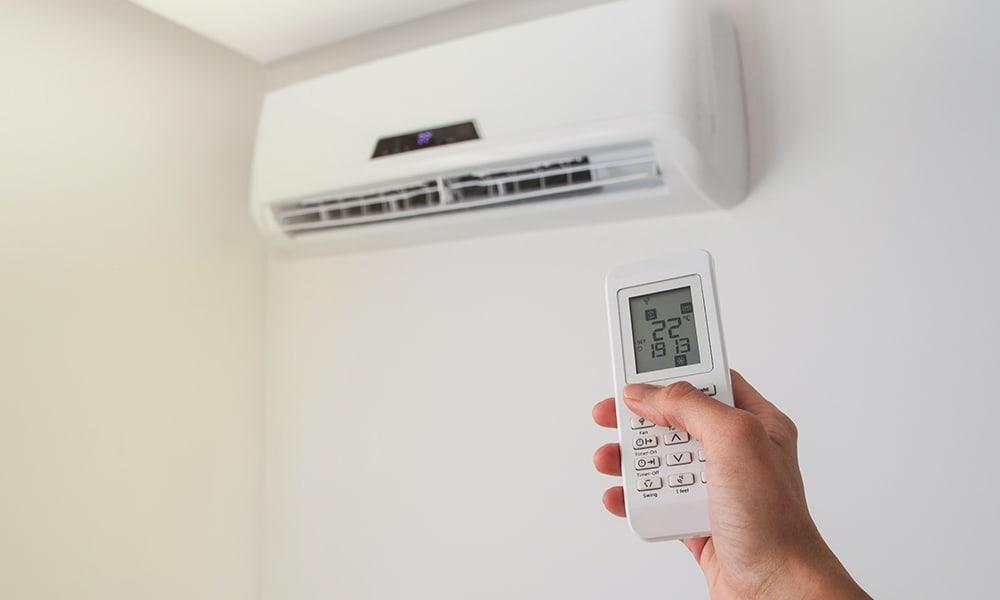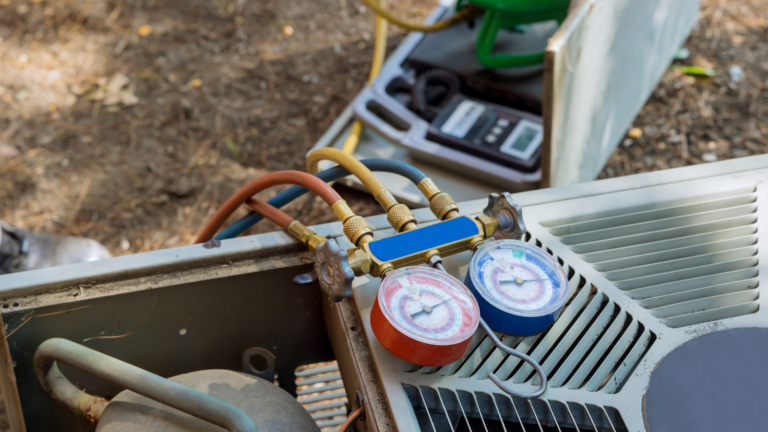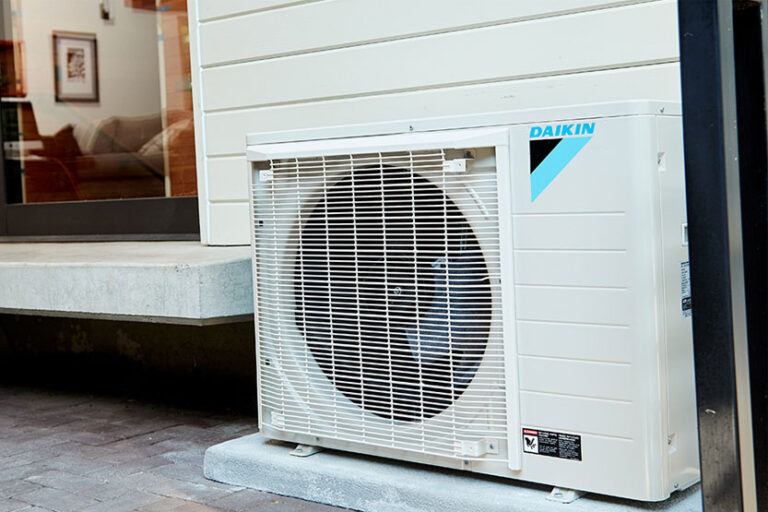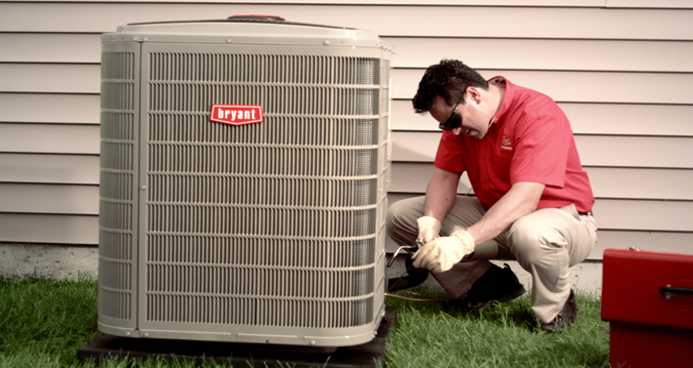Understanding Split System HVAC
In home comfort, the split system HVAC is a paragon of efficiency and convenience, revolutionizing how we heat or cool our spaces. This innovative system has taken the heating, ventilation, and air conditioning (HVAC) industry by storm, offering an ideal solution for controlling the temperature in your home or office.
In this guide, we’ll demystify the concept of a split system HVAC, exploring its numerous benefits and why it might be the perfect fit for your needs. We will also provide a clear roadmap of this article to ensure you have a seamless and engaging reading experience. So, get ready to discover the wonders of split system HVACs – where ultimate comfort meets cutting-edge efficiency.
How Split System HVAC Works
Understanding the workings of a split system HVAC can be fascinating. It’s not just about controlling temperature but also about how different components interact to ensure your comfort.
Components of a Split System
- Indoor Unit – This is where the magic starts. The indoor unit houses the evaporator coil that absorbs heat from your room, initiating the cooling process.
- Outdoor Unit – Acting as the counterpart to the indoor unit, the outdoor unit contains the compressor and condenser. It expels the absorbed heat outdoors, keeping your space cool and comfortable.
Refrigeration Cycle
The refrigeration cycle is the heart of the split system HVAC. It’s a continuous process where refrigerant circulates between the indoor and outdoor units, absorbing and releasing heat to regulate your room’s temperature.
Air Distribution Process
The air distribution process is about circulation. The system maintains a consistent temperature by strategically placing air ducts throughout your space.
Control Mechanisms
Control mechanisms are the brains behind the operation. From simple thermostats to advanced smart controls, they allow you to dictate the temperature and other settings, giving you complete control over your environment.
Types of Split System HVAC
Let’s take a fun journey into the world of split-system HVACs. We’ll explore the variety of types, helping you understand which one may be best for your needs.
Single-Zone vs. Multi-Zone Systems
A single-zone system is like a dedicated friend, focusing on cooling or heating one specific area in your home. It’s simple, efficient, and perfect for smaller spaces. On the other hand, a multi-zone system is like having a team at your disposal. It can control the temperature in multiple areas independently, making it ideal for larger homes with varying temperature needs.
Ducted vs. Ductless Systems
Ducted systems are the traditionalists of the HVAC world. They use ductwork to distribute cooled or heated air throughout your home. Ductless systems, however, are the modern rebels. They provide direct air conditioning or heating to specific areas, eliminating the need for extensive ductwork and offering more flexibility.
Heat Pump vs. Air Conditioner
Heat pumps and air conditioners seem similar, but they have distinct roles. An air conditioner is your summer buddy, cooling your space by removing heat. A heat pump, however, is a year-round companion. It not only cools your home by removing heat but can also heat it by reversing the process.
Advantages of Split System HVAC
Split system HVAC units are known for their energy efficiency. They use less power than traditional HVAC systems because they only cool or heat the needed areas, reducing unnecessary energy use. It not only makes them environmentally friendly but also helps to cut down on utility bills. Moreover, these systems are equipped with advanced technology that allows them to operate at optimal efficiency. So, you get comfort without compromising on energy conservation.
Another advantage of split systems is zone control. With this feature, you can adjust the temperature in different rooms independently. It means you can have a cooler bedroom and a warmer living room. This level of control is not possible with traditional systems. Zone control enhances comfort and further contributes to energy savings by preventing wastage.
Choosing the Right Split System HVAC
When choosing a split system HVAC, it’s essential to consider the size and capacity. The unit should be powerful enough to heat or cool your space effectively but not so large that it wastes energy. You’ll need to consider the size of your home, its insulation, and the number of people living there. It’s often best to consult with HVAC professionals to help determine the correct size and capacity for your needs.
Energy efficiency ratings are another essential factor to consider. Higher-rated systems are more efficient and can save you money in the long run. Additionally, think about your local climate and environmental factors. You may need a more robust system in a hot or cold area. Lastly, consider your budget and the cost of installation and maintenance.
Installation Process
Now that we’ve explored the types of split system HVACs let’s delve into the installation process. This step-by-step guide will give you a clear picture of what to expect.
Pre-Installation Inspection
A pre-installation inspection is similar to planning a trip. It involves assessing your home’s layout, calculating the load requirements, and determining the best location for the units. This initial step ensures the system will operate efficiently and meet your cooling or heating needs.
Mounting the Indoor Unit
Mounting the indoor unit is like hanging a picture – it must be in the right place and height. This step involves securing the unit to an interior wall, ideally in a spot that allows for optimal airflow and easy access for maintenance.
Placing the Outdoor Unit
Placing the outdoor unit is all about location. It should have ample air circulation, away from direct sunlight or heavy traffic. This step ensures the unit operates smoothly and minimizes noise and visual impact.
Refrigerant Line and Electrical Connections
Connecting the refrigerant line and electrical connections is like setting up a lifeline. It involves linking the indoor and outdoor units, allowing them to communicate and function together. A professional should handle this intricate process to ensure safety and accuracy.
Testing and Commissioning
Testing and commissioning is akin to a dress rehearsal before the grand opening. It’s a thorough check to ensure everything is working correctly. This final step includes testing the system under various conditions, adjusting settings for optimal performance, and taking you through the operation process.
Maintenance and Care
Regular cleaning and filter replacement are crucial for maintaining your split system HVAC. Dust and debris can clog the filters, reducing the system’s efficiency and potentially causing damage. Filters should be replaced every 1-3 months, depending on use. Regular cleaning of the outdoor unit and indoor vents also helps to keep the system running smoothly.
Seasonal inspections are another crucial part of HVAC maintenance. Before the start of summer and winter, have your system checked by a professional to ensure it’s ready for the coming season. They can also troubleshoot common issues and provide preventative maintenance. Professional maintenance services can identify and fix problems early, preventing costly repairs.
Energy Efficiency Tips
Setting the optimal temperature on your HVAC system can significantly improve energy efficiency. Avoid placing the temperature too high or too low; a comfortable range is usually between 68-72 degrees Fahrenheit. Adjusting the temperature based on the time of day or when you’re not home can save energy.
Effective use of zone control is another way to boost efficiency. Only heat or cool rooms that are being used, and turn off the system in unused areas. Similarly, ensuring your home is well insulated and sealed can prevent heat loss or gain, reducing the load on your HVAC system. If your system is older, consider upgrading to an energy-efficient model. While the initial cost may be higher, the savings on energy bills over time can more than makeup for it.
Conclusion
Understanding a split system HVAC can be a game changer for comfort and energy savings. It’s a system designed to give you complete control over your indoor temperature, with the bonus of being cost-effective and energy-efficient. Its two-part structure offers flexibility in installation and operation, making it a popular choice for homeowners and businesses alike. It’s not just about cooling or heating; it’s about creating an environment that enhances your lifestyle.
By emphasizing the benefits of a split system HVAC, we encourage more informed decisions regarding your heating and cooling needs. Knowledge is power; understanding your options can lead to better comfort and savings. So, before you make your next HVAC purchase, consider the advantages of a split system. This information will help you make a smart and beneficial decision in the long run.








